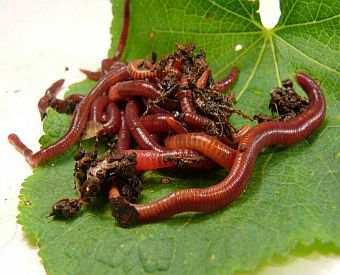10 Easy Facts About Red Wiggler Express Shown
10 Easy Facts About Red Wiggler Express Shown
Blog Article
The Facts About Red Wiggler Express Uncovered
Table of ContentsRed Wiggler Express Can Be Fun For EveryoneThe Buzz on Red Wiggler ExpressThe 6-Second Trick For Red Wiggler ExpressThe Ultimate Guide To Red Wiggler ExpressExcitement About Red Wiggler ExpressThe 10-Minute Rule for Red Wiggler Express
Like all worms red worms breathe oxygen via their skin. A wet environment likewise assists in the breakdown of natural issue in their bed linens material by microbial life kinds.
Throughout mating worms slide along each various other till their clitellum are aligned. Throughout the breeding session, which lasts for concerning 3 hours, the worms produce mucous rings around themselves.
Indicators on Red Wiggler Express You Should Know
Before dropping off all the required reproductive materials are scooped up right into the ring. When the mucus ring drops off the worm completion seals up, creating it to taper at one end, triggering the acquainted lemon form of the cocoon (Red Wiggler Express). Over the following 20 days the cocoon darkens and sets
Some worm farmers really hold back food and water to simulate dry spell conditions and bump up cocoon manufacturing. We don't advise this for the home composter as it has the potential to exterminate way too many of your best worms. Since you understand all regarding the red worm it's time to head out and find a great provider and obtain a pound or more and start your very own worm ranch.

The Ultimate Guide To Red Wiggler Express
The digestive system is easy, starting at the mouth where the worm begins to consume its food before passing it on the vocal cords. The throat is a muscle area which imitates a pump to pull food right into the mouth before pumping it out right into the esophagus. The esophagus is narrow and thin-walled and functions as the "waiting space" for the gizzard.
Note: This need for grinding is why grit is suggested in a worm bin. The worm features no native grinding capacity so the worm depends on ingested grit to aid grind its food in the gizzard. The stomach is where the very first chemical break down of food occurs with the help of a protein-busting enzyme.
The intestine creates the longest component of the worm and is where most of digestion occurs using enymatic procedures. The castings at some point travel through the rectum at the end of the worm as capsules coated with a biologically-rich mucus. (You're not consuming I hope.) Red wigglers will certainly link around one an additional, exchanging sperm with their skin.
The Definitive Guide to Red Wiggler Express
Within 42 days, these baby worms will get to sexual maturity as evidenced by the development of the clitellum. A mature red wiggler can be anticipated to live in between one to 3 years. The magnificent red wiggler might occasionally be made use of as a lure worm for smaller fish or as a protein source for chickens and reptiles.

And as mentioned over, they are the most usual composting worm in the world. Why? Well there's most likely not just one reason. Instead, a mix of cost, strength, and convenience in a large range of temperatures makes it one of the most proper composting worm for the majority of brand-new vermicomposters. Red wigglers and their cocoons can make it through in a variety of problems.
This is an usual technique amongst worm carriers that do not intend to risk having the worms being in a hot or cool storage facility over the weekend break. Worm farmers are not keeping worms in a scenario where they prepare to ship. The worms have to be harvested from their environment first, so farmers will commonly establish a Friday or Saturday deadline in order to harvest in time for a Monday shipment.
The smart Trick of Red Wiggler Express That Nobody is Discussing
To conserve on shipping price, you might desire to see if there are any type of close-by "Mommy and Pop" stores through a Google search.
I call these the "Huge 3" aspects of worm container maintenance. As mentioned earlier, red wigglers have a wide temperature tolerance.
The majority of worm container proprietors run their worm bins way also wet. And a properly-maintained worm container ought to not be generating leachate.
For best outcomes, you desire to shoot for concerning 60-70% wetness degree. At the ideal dampness levels which is just under 70% that handful need to barely produce one decline of liquid.
9 Easy Facts About Red Wiggler Express Shown
The European Nightcrawler, the bigger cousin of the red wiggler, is just as ravenous and additionally creates a great lure worm - Red Wigglers For Sale. Yet it favors a bit of a cooler environment than the red wiggler. The African Nightcrawler is a really large composting worm and makes an attractive, granular actors
(https://alivelink.org/Red-Wiggler-Express_301885.html)The Indian Blue is starved, yet also prefers a warmer climate and it likewise displays a tendency to leave the container. The red wiggler is a durable worm and isn't as particular concerning its environment. I like to call it the Ford Taurus of vermicomposting worms; you will not boast to your hardcore composting pals that you possess them, but they will offer you well.
Guaranteed alive 1/2 lb of hand sorted Red Wigglers/Compost with worms (+500 worms) in various phases of life from cocoons to develop worms in their all-natural environment/bedding. Hand sorted worms cut down on the disturbance of the worms therefore insuring real-time delivery. Red wiggler worms do not like vibrations or light.
Report this page